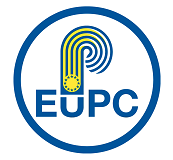2018
Why it is difficult to replace plastic packaging with other materials
Why do we choose plastics for packaging, not alternative materials such as steel, aluminum, wood, etc.?
The answer to this question is not only the functionality, the ratio of the weight of the packaging to the product, which in this case amounts to a few percent, or the possibilities of presenting the product. Well, according to the Trucost analysis, an American research agency that prepares reports also for government agencies and the UN, the environmental footprint in the case of using alternative materials would be almost 4 times higher than plastics. This, of course, does not prejudge the possibility of improving the current situation. The same analysis indicates that the use of plastic products and packaging in a sustainable manner can reduce the environmental footprint by 30%. It is important to realize that every action leaves an environmental footprint, so let us not delude ourselves that we can function without affecting the environment. On the other hand, however, we should strike a balance between the possibilities of the environment for regeneration and human activity.
The role of plastic packaging should not be considered in isolation from their function, i.e. product protection. As far as home appliances and consumer electronics are concerned, consumers know perfectly well that EPS packaging protects the product from damage by effectively absorbing shocks and impacts. Properly formed, they protect all external elements, even very fragile, preventing damage and contribute to sustainable development in this way. Otherwise, damaged equipment would have to be returned to the manufacturer, which would result in an additional environmental footprint (transport, repair, use of new spare parts).
Plastic packaging has the largest contribution to reducing food losses. Limiting food losses is one of the main components of the Circular Economy. Packaging not only protects food and extends its shelf life, but also minimizes the risk of loss of nutritional value of stored products, as well as taste and smell. There are a number of technologies here, such as, among others, CAP- Controlled Atmosphere PAckaging or MAP-Modiefied Atmosphere Packing. These methods significantly extend the usefulness of products without interfering with their properties. They are used to pack fruits, vegetables, meat, poultry, fish and bakery products. In turn, the CAP (Controlled Atmosphere Packing) packaging method involves packaging food in a controlled atmosphere. This technology makes it possible to control and change the composition of the gas mixture during product storage. Packing in the CAP system is used when packing large containers and storing products on an industrial scale. Also known here are the so-called laminates, hot doubled two films from different polymers, each of them performs a different function, such as an oxygen barrier, or the properties of sticking with the lower part. In the near future, the processors will be forced to move away from these types of solutions in favor of recycling. The new EU regulation projects impose on producers the obligation to manufacture, from 2030, recyclable packaging in a cost-effective manner, which requires a number of activities from the business side.
However, with regard to plastic packaging, they are the ones that cause a lot of controversy and are often subject to very strong criticism. The European Commission has taken action to reduce the consumption of some plastic products for single use. The draft directive that limits their use of the so-called Single Use Plastics Directive. The European Commission proposes, based on a report on the most commonly found waste on beaches, a ban of use or restrictions on specific products. The project proposes to limit the use of containers for ready-to-eat foods and mugs for drinks, as well as a ban on the distribution of cutlery, plates, straws, cosmetic sticks and supports for plastic balloons. The project introduces an Extended Manufacturer Responsibility for manufacturers of selected products. Apart from the debatable issues of producers' responsibility, which, according to the EC, should also extend to the area of inefficient management of waste collection and inappropriate consumer behavior, the most important element here is the attempt to replace plastic materials with alternative materials. The only question is whether the amount of waste in the environment will be diminished due to the lack of limitation of the use of alternative materials for the aforementioned applications. It will certainly increase if consumers do not change their behavior, and protection systems against uncontrolled leaking of waste to the environment will remain unchanged. A number of scientific analyzes indicate that plastic packaging has a significantly lower environmental impact in the production and transport phase than materials such as aluminum, cotton, paper, and steel. However, their durability, which is an advantage in the case of product protection, can be a serious disadvantage as a result of a failure consumers behaviour and incorrect management systems.


